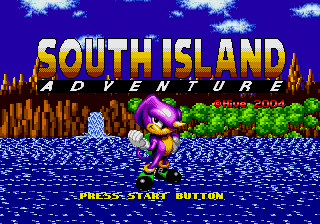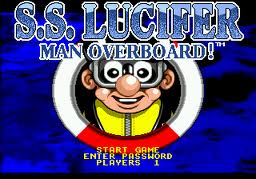Menu

Space Harrier 2
Space Harrier (スペースハリアー Supēsu Hariā?) is a third-person rail shooter game, released by Sega in 1985. It was produced byRead more
Space Harrier (スペースハリアー Supēsu Hariā?) is a third-person rail shooter game, released by Sega in 1985. It was produced by Yu Suzuki, responsible for many popular Sega games. It spawned several sequels: Space Harrier 3-D (1988), Space Harrier II (1988), and the spin-off Planet Harriers (2000).
Space Harrier was originally made for the arcades, and later saw ports to many home game systems. Space Harrier's release on the Sega Master System is notable, as there were two versions: one was just like the arcade, while the other, entitled Space Harrier 3-D was actually a sequel.
It was one of the first arcade games to use 16-bit graphics and Sega's "Super Scaler" technology that allowed pseudo-3D sprite-scaling at high frame rates,[2] with the ability to scale as many as 32,000 sprites and fill a moving landscape with them,[3] along with over 32,000 colours displayed simultaneously on the screen. It also introduced a true analog flight stick for movement, with the ability to register movement in any direction as well as measure the degree of push, which could move the player character at different speeds depending on how far the stick is pushed in a certain direction.[4] The game was also an early example of a third-person shooter;[5] it was influenced by the earlier 1982 Sega game Buck Rogers: Planet of Zoom, and Space Harrier in turn influenced later 3D shooters such as Nintendo's Star Fox/Starwing in 1993.
Ssega
2015-02-20 23:29:29
55.5k










Space Harrier 2
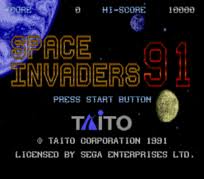
Space Invaders
Space Invaders (スペースインベーダー, Supēsu Inbēdā?) is an arcade video game developed by Tomohiro Nishikado and released in 1978Read more
Space Invaders (スペースインベーダー, Supēsu Inbēdā?) is an arcade video game developed by Tomohiro Nishikado and released in 1978. It was originally manufactured and sold by Taito in Japan, and was later licensed for production in the United States by the Midway division of Bally. Space Invaders is one of the earliest shooting games and the aim is to defeat waves of aliens with a laser cannon to earn as many points as possible. In designing the game, Nishikado drew inspiration from popular media: Breakout, The War of the Worlds, and Star Wars. To complete it, he had to design custom hardware and development tools.
It was one of the forerunners of modern video gaming and helped expand the video game industry from a novelty to a global industry (see golden age of video arcade games). When first released, Space Invaders was very successful.
The game has been the inspiration for other video games, re-released on numerous platforms, and led to several sequels. The 1980 Atari 2600 version quadrupled the system's sales and became the first "killer app" for video game consoles. Space Invaders has been referenced and parodied in multiple television shows, and been a part of several video game and cultural exhibitions. The pixelated enemy alien has become a pop culture icon, often used as a synecdoche representing video games as a whole.
Ssega
2015-02-20 23:29:29
56.8k










Space Invaders
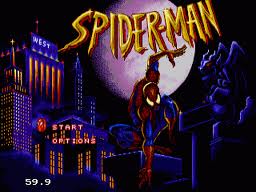
Spider-Man - The Ani...
Spider-Man is a fictional character, a comic book superhero that appears in comic books published by Marvel Comics. CreaRead more
Spider-Man is a fictional character, a comic book superhero that appears in comic books published by Marvel Comics. Created by writer-editor Stan Lee and writer-artist Steve Ditko, he first appeared in Amazing Fantasy #15 (cover-dated Aug. 1962). Lee and Ditko conceived the character as an orphan being raised by his Aunt May and Uncle Ben, and as a teenager, having to deal with the normal struggles of adolescence in addition to those of a costumed crimefighter. Spider-Man's creators gave him super strength and agility, the ability to cling to most surfaces, shoot spider-webs using wrist-mounted devices of his own invention (which he called "web-shooters"), and react to danger quickly with his "spider-sense", enabling him to combat his foes.
When Spider-Man first appeared in the early 1960s, teenagers in superhero comic books were usually relegated to the role of sidekick to the protagonist. The Spider-Man series broke ground by featuring Peter Parker, a teenage high school student and person behind Spider-Man's secret identity to whose "self-obsessions with rejection, inadequacy, and loneliness" young readers could relate. Unlike previous teen heroes such as Bucky and Robin, Spider-Man did not benefit from being the protégé of any adult superhero mentors like Captain America and Batman, and thus had to learn for himself that "with great power there must also come great responsibility"—a line included in a text box in the final panel of the first Spider-Man story, but later retroactively attributed to his guardian, the late Uncle Ben.
Marvel has featured Spider-Man in several comic book series, the first and longest-lasting of which is titled The Amazing Spider-Man. Over the years, the Peter Parker character has developed from shy, nerdy high school student to troubled but outgoing college student, to married high school teacher to, in the late 2000s, a single freelance photographer, his most typical adult role. In the 2010s, he joins the Avengers and the Fantastic Four, Marvel's flagship superhero teams. In recent storylines, Peter Parker dies while his mind is in the body of his enemy Doctor Octopus; Doctor Octopus then lives on inside of Parker's body, taking the role of Spider-Man in The Superior Spider-Man (2013–present). However, on January 11, 2014, it was officially confirmed that the character will return in April 2014. Separately, Marvel also introduced a new Spider-Man, the mixed race teenager Miles Morales, in stories set in its Ultimate Comics-branded alternative universe.
Spider-Man is one of the most popular and commercially successful superheroes. As Marvel's flagship character and company mascot, he has appeared in many forms of media, including several animated and live-action television shows, syndicated newspaper comic strips, and a series of films starring Tobey Maguire as the "friendly neighborhood" hero in the first three movies. Andrew Garfield has taken over the role of Spider-Man in a reboot of the films. Reeve Carney stars as Spider-Man in the 2010 Broadway musical Spider-Man: Turn Off the Dark. Spider-Man placed 3rd on IGN's Top 100 Comic Book Heroes of All Time in 2011.
Ssega
2015-02-20 23:29:29
159.9k










Spider-Man - The Animate...
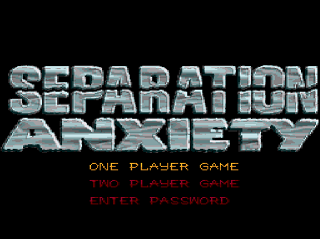
Spider-Man & Venom -...
Venom/Spider-Man: Separation Anxiety is a side-scrolling beat 'em up video game and sequel to Spider-Man and Venom: MaxiRead more
Venom/Spider-Man: Separation Anxiety is a side-scrolling beat 'em up video game and sequel to Spider-Man and Venom: Maximum Carnage, released for Sega Mega Drive and Super NES and then ported to PC, in which one or two players could team up as Spider-Man and Venom to defeat the evil symbiote Carnage. The game boasts a large number of thugs that the player has to defeat: heavily armed Jury and Venom's symbiote children.
Ssega
2015-06-27 17:15:07
36.9k










Spider-Man & Venom - Sep...

Spider-Man and the X...
Spider-Man and the X-Men in Arcade's Revenge is a video game first released for the Super Nintendo in 1992 by LJN. It waRead more
Spider-Man and the X-Men in Arcade's Revenge is a video game first released for the Super Nintendo in 1992 by LJN. It was later released for the Sega Genesis/Mega Drive and Game Gear (under the Flying Edge brand) as well as the Game Boy. The game features Marvel Comics characters Spider-Man and the X-Men as they battle their captor, the villainous Arcade.
Ssega
2015-04-29 23:13:46
59.5k










Spider-Man and the X-Men...
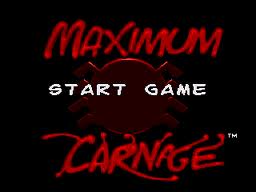
Spider-Man and Venom...
Spider-Man and Venom: Maximum Carnage is a side-scrolling beat 'em up video game for the Super NES and Sega Mega Drive/GRead more
Spider-Man and Venom: Maximum Carnage is a side-scrolling beat 'em up video game for the Super NES and Sega Mega Drive/Genesis, developed by Software Creations and published by LJN (a subsidiary of Acclaim) in 1994. The game, based on a sprawling comic book story arc of the same name, featured numerous heroes, including Spider-Man, Venom, and their allies from the Marvel Comics fictional universe like Captain America, Black Cat, Iron Fist, Cloak and Dagger, Deathlok, Morbius and Firestar, all teaming up to battle an onslaught of villains led by Carnage, including Shriek, Doppelganger, Demogoblin and Carrion.The game featured a colored cartridge. Both the Sega Mega Drive/Genesis and Super Nintendo versions were red. They were later released in the normal cartridge colors (black for Genesis, gray for SNES).The game was followed up by a sequel called Venom/Spider-Man: Separation Anxiety.Universal Studios Orlando used Maximum Carnage as the theme for a haunted house at Halloween Horror Nights in 2002.
Ssega
2015-02-20 23:29:29
148.4k










Spider-Man and Venom - M...
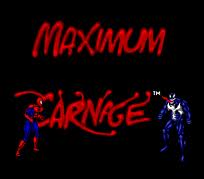
Spider-Man and Venom...
Spider-Man and Venom: Maximum Carnage is a side-scrolling beat 'em up video game for the Super NES and Sega Mega Drive/GRead more
Spider-Man and Venom: Maximum Carnage is a side-scrolling beat 'em up video game for the Super NES and Sega Mega Drive/Genesis, developed by Software Creations and published by LJN (a subsidiary of Acclaim) in 1994. The game, based on a sprawling comic book story arc of the same name, featured numerous heroes, including Spider-Man, Venom, and their allies from the Marvel Comics fictional universe like Captain America, Black Cat, Iron Fist, Cloak and Dagger, Deathlok, Morbius and Firestar, all teaming up to battle an onslaught of villains led by Carnage, including Shriek, Doppelganger, Demogoblin and Carrion.
The game featured a colored cartridge. Both the Sega Mega Drive/Genesis and Super Nintendo versions were red. They were later released in the normal cartridge colors (black for Genesis, gray for SNES).
The game was followed up by a sequel called Venom/Spider-Man: Separation Anxiety.
Universal Studios Orlando used Maximum Carnage as the theme for a haunted house at Halloween Horror Nights in 2002.
Ssega
2015-02-20 23:29:14
206.9k










Spider-Man and Venom: Ma...
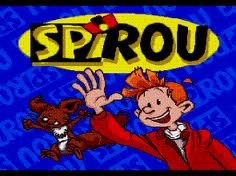
Spirou
Spirou is a platform-style video game developed and published by Infogrames Entertainment during 1995 and 1996 for the SRead more
Spirou is a platform-style video game developed and published by Infogrames Entertainment during 1995 and 1996 for the Sega Mega Drive, SNES and Game Boy video game consoles. Based on the Spirou et Fantasio comic book series it features the adventure of Spirou trying to save his kidnapped friend Count Champignac and stop his arch-enemy Cyanida from making robots rule the earth.
The game was noted for its good graphics and for being faithful to Spirou et Fantasio the comic book series, but due to the relatively high difficulty, most reviewers only recommended the game for true fans of the comic book series.
Ssega
2015-02-20 23:29:48
34.5k










Spirou
SS Lucifer - Man Overboa...
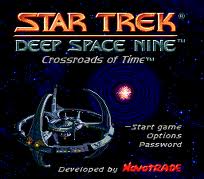
Star Trek - Deep Spa...
Star Trek is an American science fiction entertainment franchise created by Gene Roddenberry and currently under the ownRead more
Star Trek is an American science fiction entertainment franchise created by Gene Roddenberry and currently under the ownership of CBS and Paramount. Star Trek: The Original Series and its live action TV spin-off shows, Star Trek: The Next Generation, Star Trek: Deep Space Nine, Star Trek: Voyager and Star Trek: Enterprise as well as the Star Trek film series make up the main canon, while Star Trek: The Animated Series as well as the expansive library of Star Trek novels and comics are part of the franchise, but are generally considered non-canon.
The first series, now referred to as "The Original Series", debuted in 1966 and ran for three seasons on NBC. It followed the interstellar adventures of James T. Kirk and the crew of the starship Enterprise, an exploration vessel of a 23rd-century interstellar "United Federation of Planets". In creating the first "Star Trek", Roddenberry was inspired by Westerns such as Wagon Train, along with the Horatio Hornblower novels and Gulliver's Travels. These adventures continued in the short-lived Star Trek: The Animated Series and six feature films. Four spin-off television series were eventually produced: Star Trek: The Next Generation, followed the crew of a new starship Enterprise set a century after the original series; Star Trek: Deep Space Nine and Star Trek: Voyager, set contemporaneously with The Next Generation; and Star Trek: Enterprise, set before the original series, in the early days of human interstellar travel. Four additional The Next Generation feature films were produced. In 2009, the film franchise underwent a relaunch with a prequel to the original series set in an alternate timeline titled simply Star Trek. This film featured a new cast portraying younger versions of the crew from the original Enterprise. A sequel to this film, Star Trek Into Darkness, premiered on May 16, 2013.
Star Trek has been a cult phenomenon for decades. Fans of the franchise are called Trekkies or Trekkers. The franchise spans a wide range of spin-offs including games, figurines, novels, toys, and comics. Star Trek had a themed attraction in Las Vegas which opened in 1998 and closed in September 2008. At least two museum exhibits of props travel the world. The series has its own full-fledged constructed language, Klingon. Several parodies have been made of Star Trek. Its fans, despite the end of Star Trek episodes on TV, have produced several fan productions to fill that void.
Star Trek is noted for its influence on the world outside of science fiction. It has been cited as an inspiration for several technological inventions such as the cell phone. Moreover, the show is noted for its progressive civil rights stances. The original series included one of television's first multiracial casts, and the first televised inter-racial kiss. Star Trek references can be found throughout popular culture from movies such as the submarine thriller Crimson Tide to the cartoon series South Park.
Ssega
2015-02-20 23:29:29
46.4k










Star Trek - Deep Space 9...

Star Trek - The Next...
Star Trek: The Next Generation: Future's Past (Star Trek: The Next Generation: Echoes from the Past on Sega) is a 1994 aRead more
Star Trek: The Next Generation: Future's Past (Star Trek: The Next Generation: Echoes from the Past on Sega) is a 1994 adventure game featuring strategy and puzzle-solving elements. The game was released for the Super Nintendo Entertainment System, the Sega Genesis and the Sega Game Gear. It takes place in the Star Trek universe, spanning Federation space and the Romulan Neutral Zone, and centers around the appearance of the IFD (Integrated Field Derandomizer), an artifact machine of unknown origin that, as its name suggests, allows its user to reshape matter and energy. It culminates in the IFD Trials, three tests undertaken by representatives of any races that are present when the Trials are held, and failure would mean the destruction of the Federation and the enslavement of countless worlds by the Federation's enemies.
Both the Sega and Nintendo games feature largely identical gameplay, but with some key differences between versions.
Ssega
2015-02-20 23:29:29
75.9k












